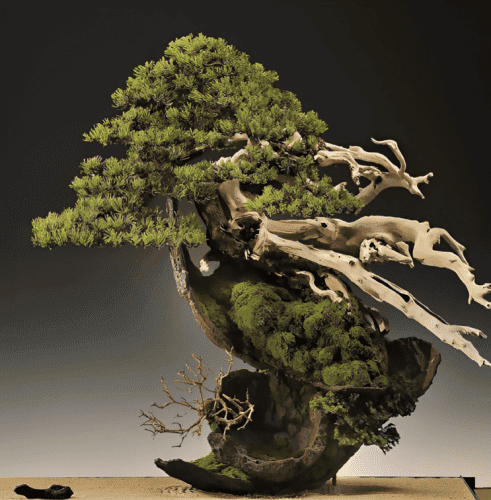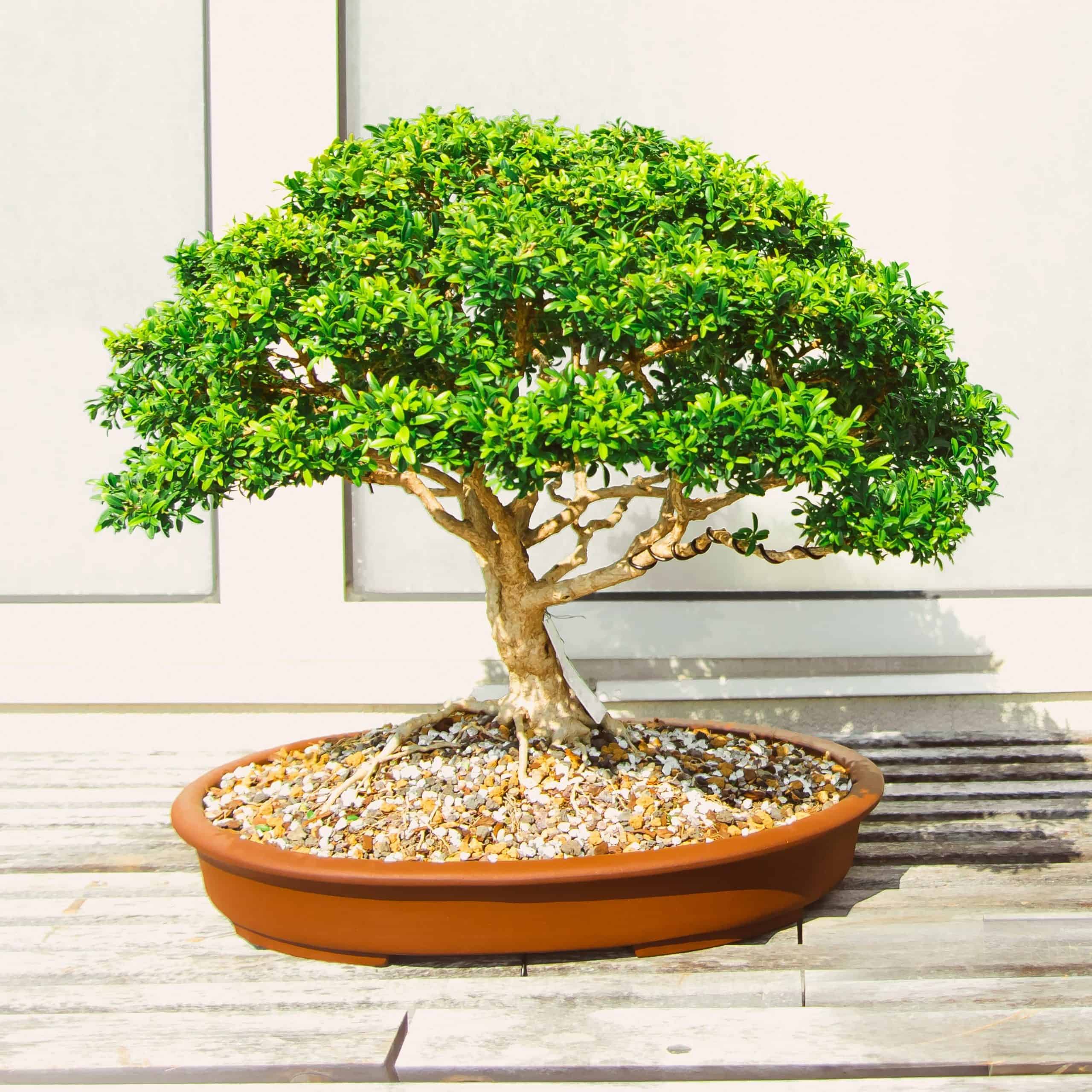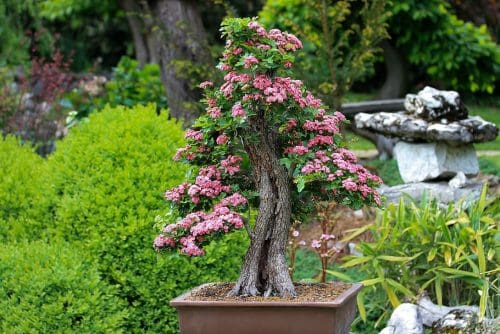The Zen of Bonsai comes from its ancient roots! From the depths of Chinese horticulture to the heights of Japanese Zen Buddhism, the art form has been around for over a thousand years – and some trees have lived through it all!
Time and patience are key, but with a little love, you can reap the rewards. Though growing a Bonsai tree is a hobby practiced by many people around the world, its Asian origin is still obvious.

Derived from an ancient Chinese horticulture practice and redeveloped under the influence of Japanese Zen Buddhism, Bonsai is a Japanese term that translates to ‘planted in a container.’ It has been around for well over a thousand years and there are types of Bonsai trees that are hundreds of years old.
As a hobby bonsai requires a lot of patience and time and can be very rewarding at the end of it. All one requires are a few basic materials and some basic tools. There are many popular Bonsai tree types ranging from a Bonsai Cherry tree to a Bonsai tree apple, a Jade Bonsai tree, or a Maple Bonsai tree.
One can buy a ‘Bonsai tree,’ but learning to grow it is wonderful, because it is an art to take any type of tree or shrub and grow it and trim it in ways so that it remains small, yet the proportions and uncanny look of its larger counterparts. The ultimate goal of growing a Bonsai is to create a miniaturised but realistic representation of nature in the form of a tree.
Most commonly kept under four feet (or about a meter) in height, these are not genetically dwarfed plants. Techniques such as pinching buds, pruning, and wiring branches, and carefully restricting but not abandoning fertilisers are used to limit and redirect healthy growth.
However, plants with smaller leaves do make these compositions easier to design. Any plant species that has a woody stem or trunk grows true branches, can be successfully grown in a container to restrict its roots/food storage capability, and has smaller or reducible leaves, which can be used to create a Bonsai.
The ultimate goal of Bonsai is to create a realistic depiction of nature. As it gets smaller (even down to a few inches/ centimetres) it increasingly becomes abstract, as opposed to resembling nature in a more precise way.

Several classifications of Bonsai have been put forward, and although the exact size classifications are disputed, they help to gain an understanding of the aesthetic and botanical aspects of it. The classifications are originally based on the number of men needed to lift the actual tree.
The containers for these trees could be of interest to Bonsai growers. Traditionally made in China and then Japan, these shallow containers of mostly fired earthenware are increasingly crafted by both professional and amateur artisans around the world.
The matching up of a pot to a designed tree can be a wonderful challenge, for the pot must support the tree as well as be an attractive but non-intrusive frame to the Bonsai’s picture.
The Indian Bonsai Association 2013 has been hosting an annual Bonsai Exhibition at the National Bonsai Park, Lodhi Garden, New Delhi.
Interesting facts about Bonsai trees

Bonsai trees are a popular art form that has become increasingly prevalent in modern culture. Often referred to as miniature living works of art, bonsai are meticulously crafted trees grown in containers.
Bonsai artists take great pride in the careful shaping and pruning necessary to create these miniature replicas of natural landscapes. Here are some interesting facts about bonsai trees.
The origin of the term “bonsai” is Japanese and translates to “tray planting” in English.
The first documented use of this term dates back to the 12th century during the Heian period when it was used to describe small container gardens.
Bonsai are traditionally propagated from cuttings or by carefully transferring newly rooted plants from soil to container.
In some cases, larger species of trees can be started from seed in a small pot and then trained over time into the desired shape.
There is no single “right” way to care for a bonsai. Caring for a bonsai requires knowledge of the particular species and its preferred growing conditions, pruning techniques, and soil types.
Some species of trees can live to be hundreds of years old when maintained properly.
Bonsai trees are often regarded as family heirlooms that can be passed down from generation to generation.
Bonsai trees have been used as a symbol of life and inner peace by many cultures throughout history. The meticulous care and attention devoted to the shaping and pruning of bonsai are regarded as a spiritual practice that brings its practitioners closer to nature.
Bonsai trees are living works of art that provide a unique link between our natural world and the artistry of handcrafted miniature landscapes.
Whether used as a symbol of life or inner peace, bonsai trees are sure to captivate the minds of admirers for generations to come.
Read more: Latest



